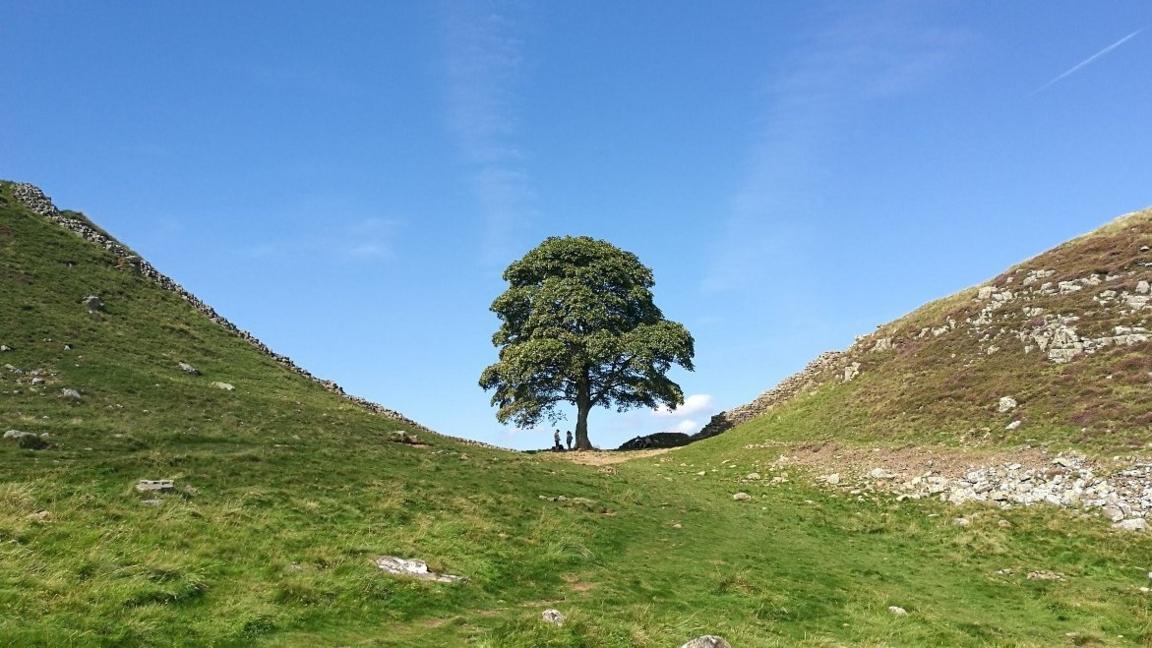Sycamore Gap: Cut down tree could regrow shoots, experts say
- Published
Watch: The Sycamore Gap... then, and now
New shoots could still grow from one of the UK's most famous trees which was deliberately chopped down, but it will never be the same again, experts say.
The landmark at Sycamore Gap, beside Hadrian's Wall in Northumberland, was felled overnight on Wednesday.
National Trust manager Andrew Poad said the stump was "healthy" and they might be able to coppice the tree, external, where new shoots grow from the trunk's base.
A boy, 16, has been held on suspicion of criminal damage and bailed.
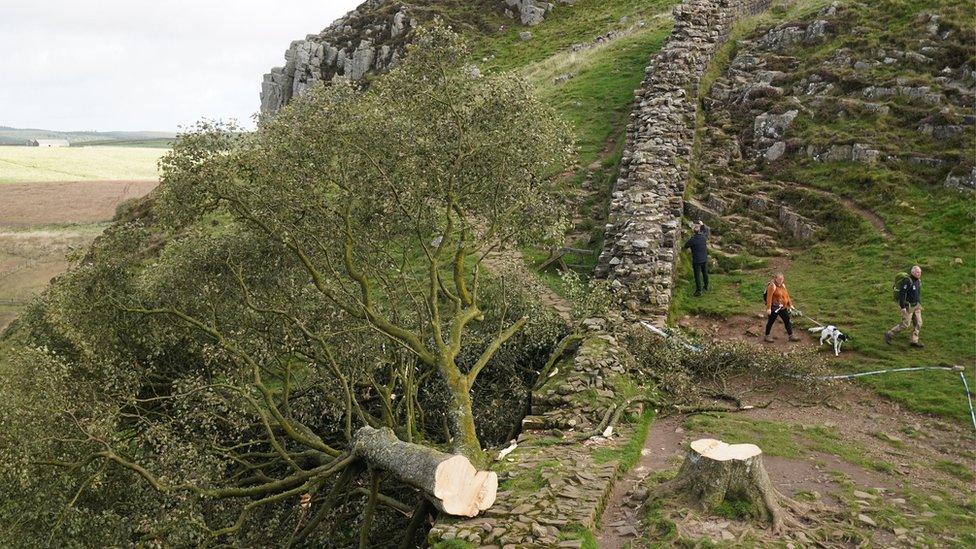
The site remains cordoned off as police inquiries continue
Mr Poad told BBC Breakfast: "It's a very healthy tree, we can see that now, because of the condition of the stump, it may well regrow a coppice from the stump, and if we could nurture that then that might be one of the best outcomes, and then we keep the tree."
Mark Feather, estate manager at the Woodland Trust, said it would "take a few years to develop into even a small tree and around 150 to 200 years before it is anywhere close to what we have lost".
"Once a tree of this age has gone, the sad truth is you can't replace them within any visible timeframe. It takes centuries," he said.

The tree was featured in Kevin Costner's 1991 film Robin Hood: Prince of Thieves
Rob Ternent, head gardener at the Alnwick Garden in Northumberland, said the tree would start growing again but "won't ever be the same shape or as good of a tree as it was".
"It'll be very difficult to get it back to the original tree," he said.
"The growing season's coming to an end now but by spring next year it will have some life in it. It'll probably be about 8ft tall, but it'll be lots of singular branches, more bushy."
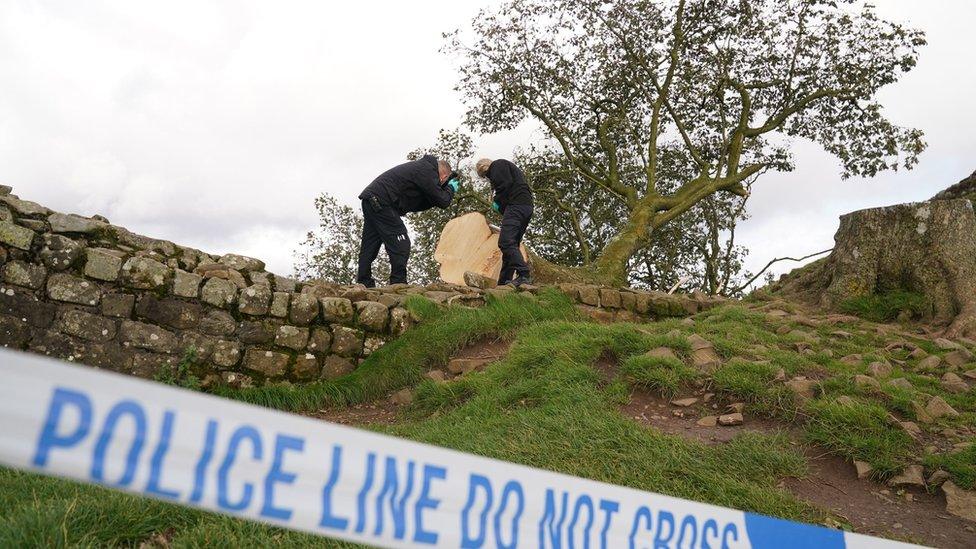
It is believed a chainsaw was used to fell the popular tree
Northumberland National Park Authority officials believe the tree, known as Robin Hood's Tree, was "deliberately felled".
Chief executive Tony Gates said it was "part of England's identity" as it had been "a real inspiration" to artists, writers and photographers.
"A lot of people have a deep connection to this place, and fond memories of this place, and to have lost that is a real shame," he said.
He added he hoped it would not affect tourism "too much" as Northumberland had "many other beautiful things to see".
"We're hoping people will continue to come here, and we will look to the future and how we can continue to make this a special place for people."

What is coppicing?
Coppicing is a technique that involves felling trees at their base to create a stump, known as the stool, where new shoots will grow.
The shoots regrow from dormant buds at the base of the stump to create dense stands of multi-stemmed trees.
It dates back to the Stone Age and was originally used to ensure a regular source of firewood and timber.
Source: National Trust and Woodland Trust

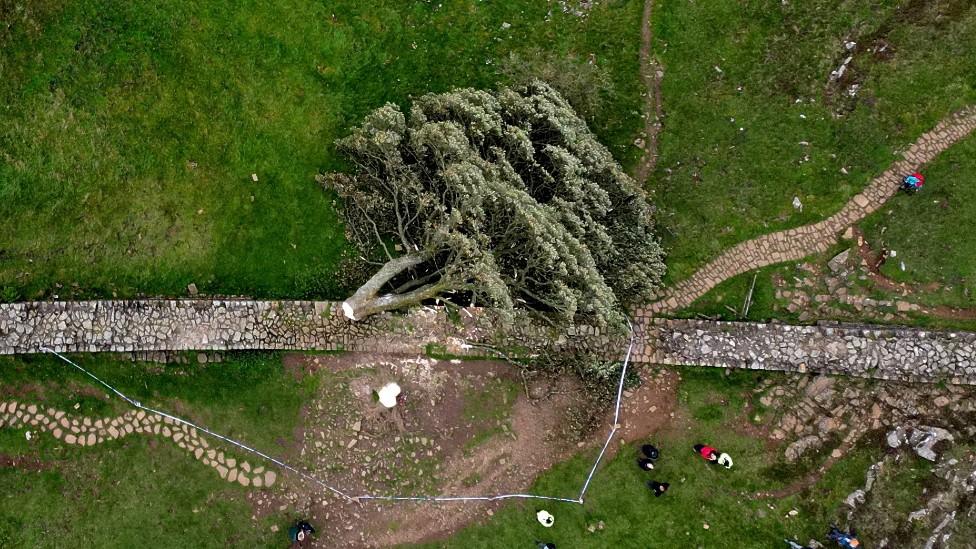
The loss of the tree has been met with shock, sadness and anger in the North East
The High Sheriff of Northumberland, Diana Barkes, said it was an "emblem" of the county, and it was a "huge loss" to everybody with "a lot of anger and upset".
"Whether we can create something out of the wood for people to come and remember the tree and remember their loved ones, I don't know, but maybe," she said.
The tree was believed to be about 200 years old, and was looked after by both the Park Authority and the National Trust.
It grew in a natural dip in the landscape near Hexham and featured in the 1991 film Robin Hood: Prince of Thieves, starring Kevin Costner.
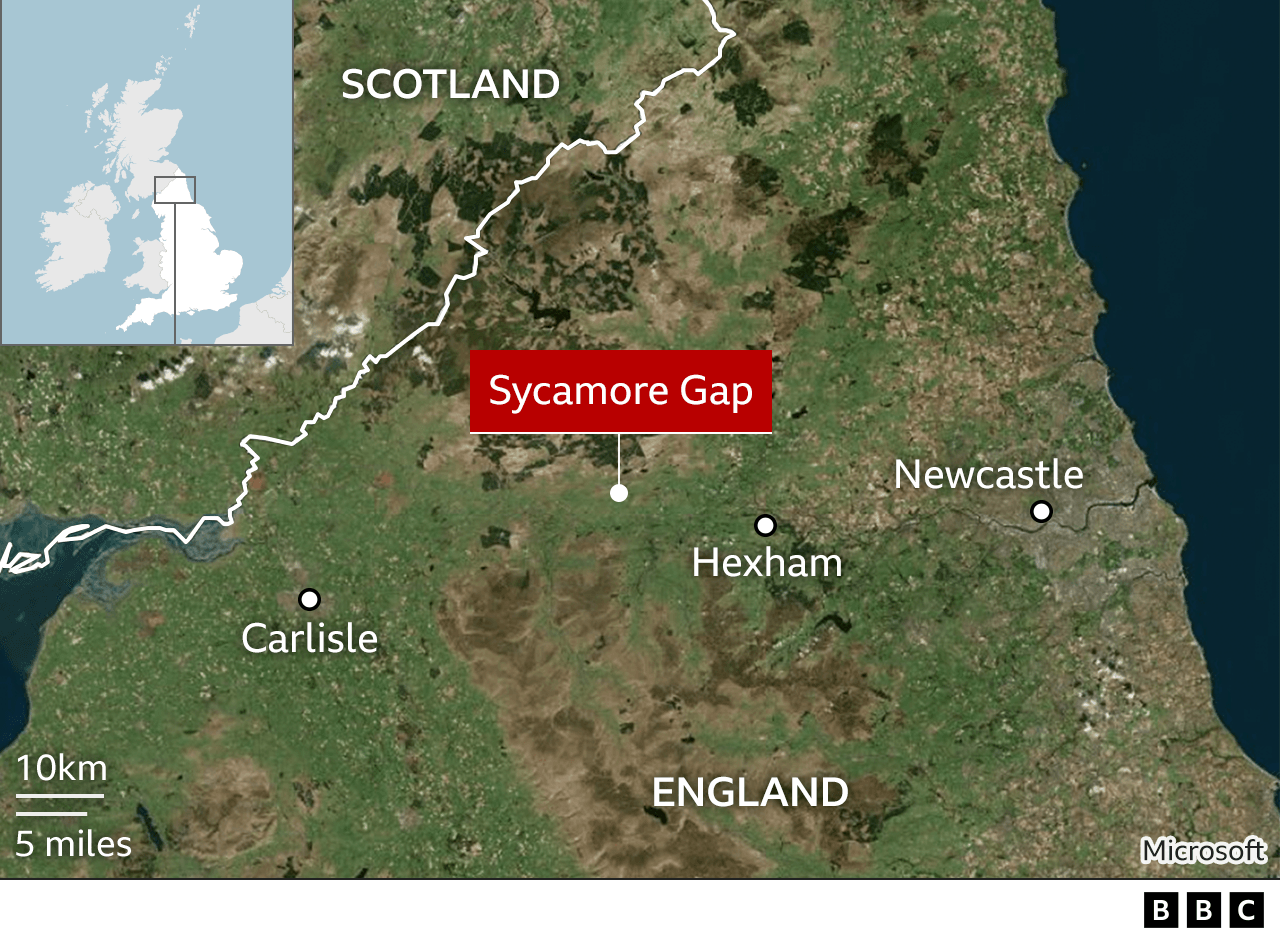

At the scene
By BBC correspondent Alison Freeman
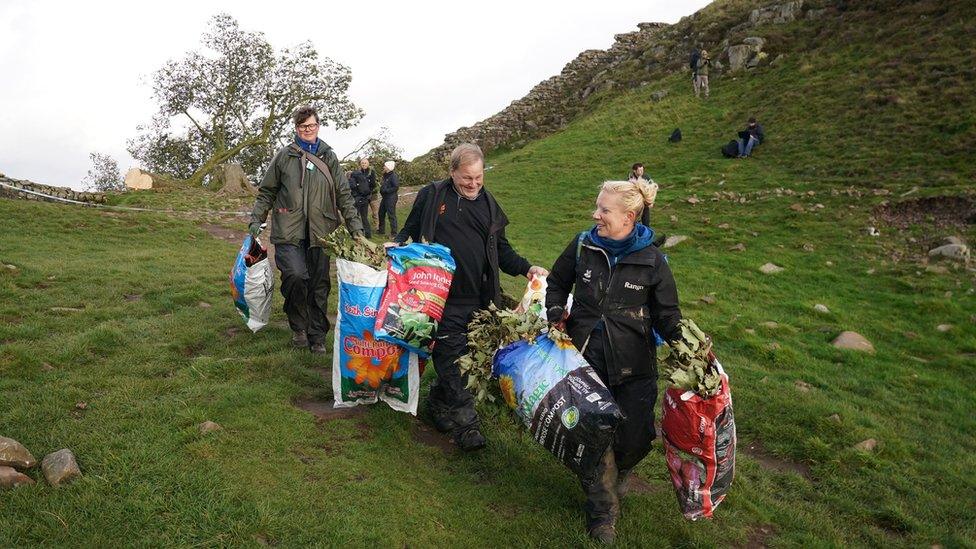
National Trust rangers have been clearing the sycamore's branches from the site
This is still very much a crime scene. Forensics police officers have been here taking photographs and measurements of the tree's stump, and scraping off samples of the bark.
The atmosphere remains incredibly solemn. People are continuing to walk to the site to pay their respects, taking their time to stand or sit looking at what remains.
There is still a sense of disbelief that this has really happened.

In 2016, it was named Tree of the Year in a competition organised by the Woodland Trust.
The tree's felling led to an outpouring of emotion with many lamenting the loss of an emblem of the North East, with many saying they had proposed to partners at the tree and scattered loved ones' ashes nearby.
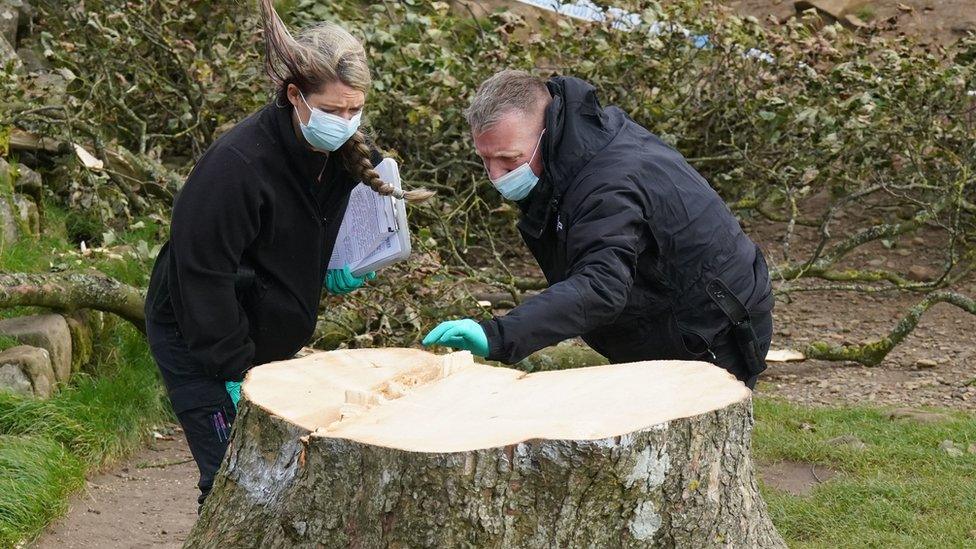
Northumbria Police says its investigation is still in its early stages
Following the public response, author and environmentalist Prof Robert Macfarlane told Radio 4's Today programme that the "question now is how do we use that strength of feeling and turn it to the good?".
He said that the "focus shouldn't be on the offender" but on ensuring "greater protection for big, old venerable standard trees".
"The best way to remember the loss of a tree, I would say, is with the gain of a forest.
"Let us see natural forestation take place in the region... let us see a Sycamore Gap forest rise for the loss of a tree."

What memories do you have of the tree? What questions do you have? Are you a tree surgeon? Please get in touch by emailing haveyoursay@bbc.co.uk, external.
Please include a contact number if you are willing to speak to a BBC journalist. You can also get in touch in the following ways:
WhatsApp: +44 7756 165803
Tweet: @BBC_HaveYourSay, external
Please read our terms & conditions and privacy policy
If you are reading this page and can't see the form you will need to visit the mobile version of the BBC website to submit your question or comment or you can email us at HaveYourSay@bbc.co.uk, external. Please include your name, age and location with any submission.

Follow BBC North East & Cumbria on X (formerly Twitter), external, Facebook, external and Instagram, external. Send your story ideas to northeastandcumbria@bbc.co.uk, external.
- Published29 September 2023
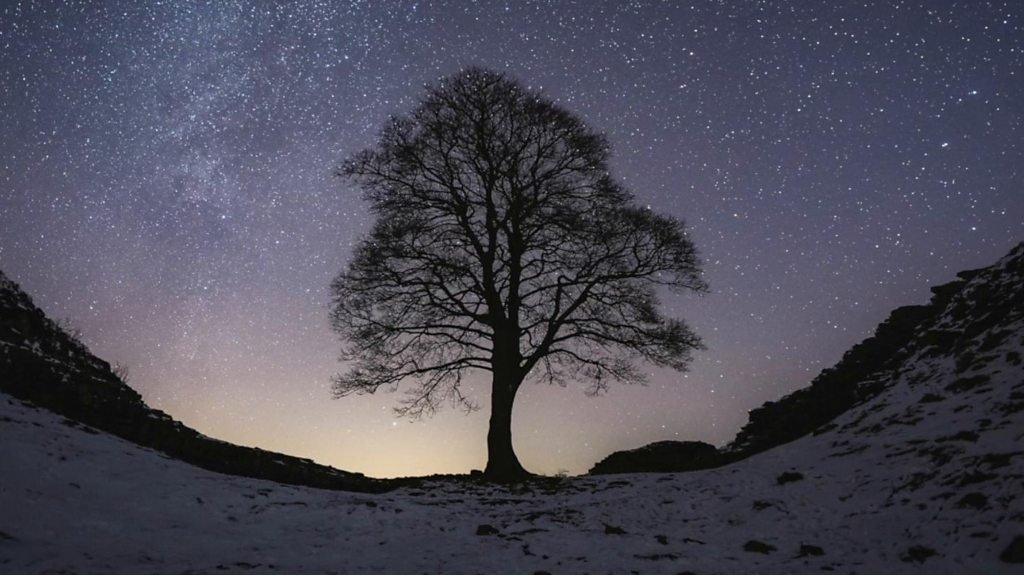
- Published28 September 2023
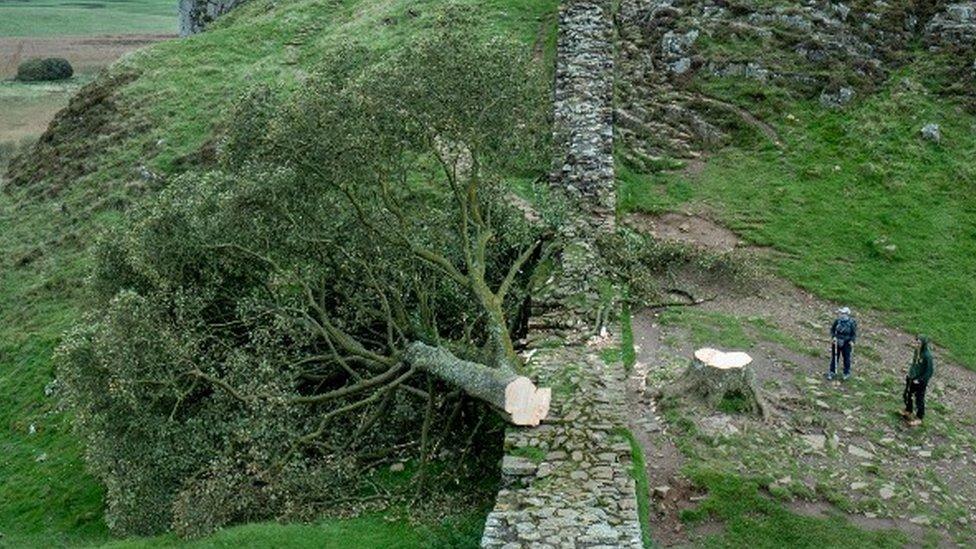
- Published28 September 2023
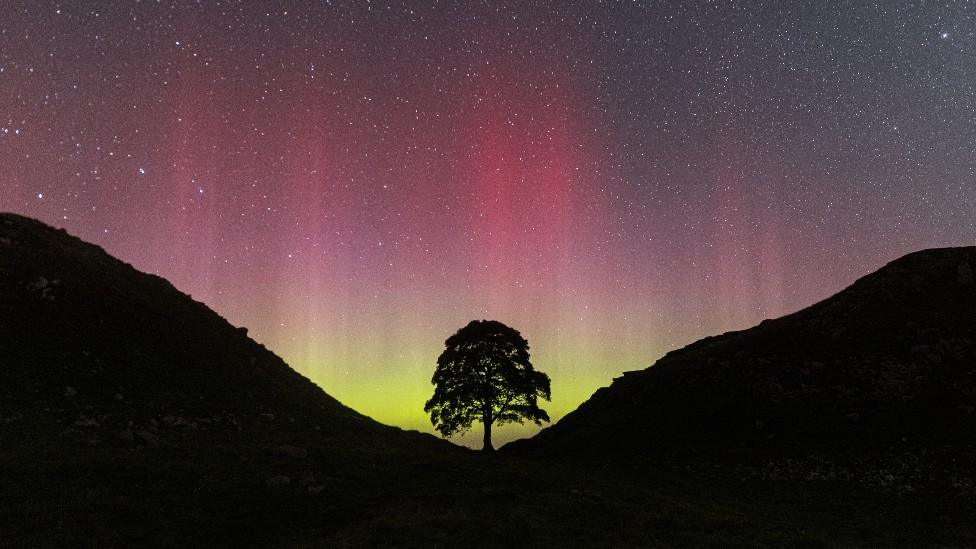
- Published28 September 2023
